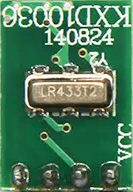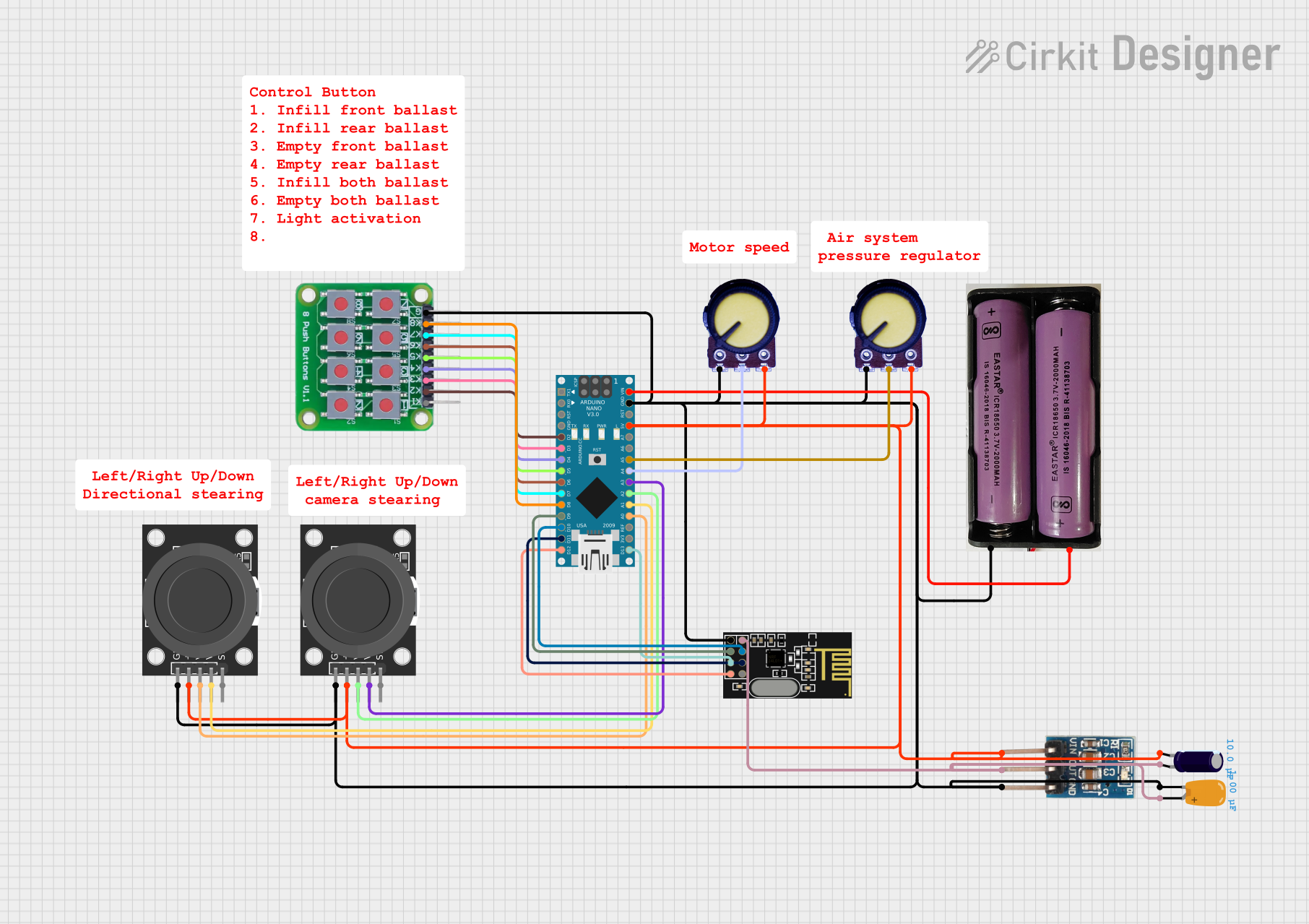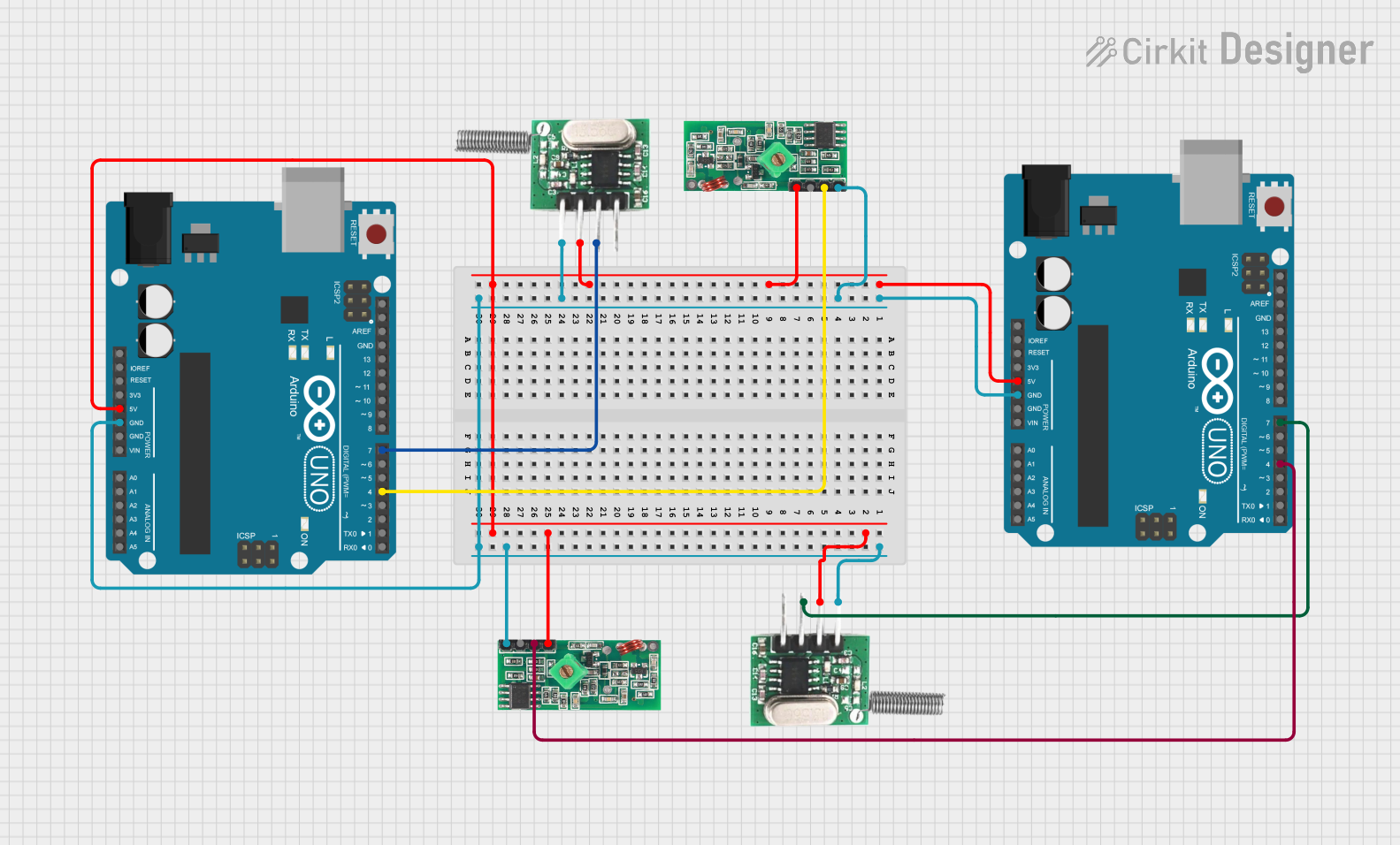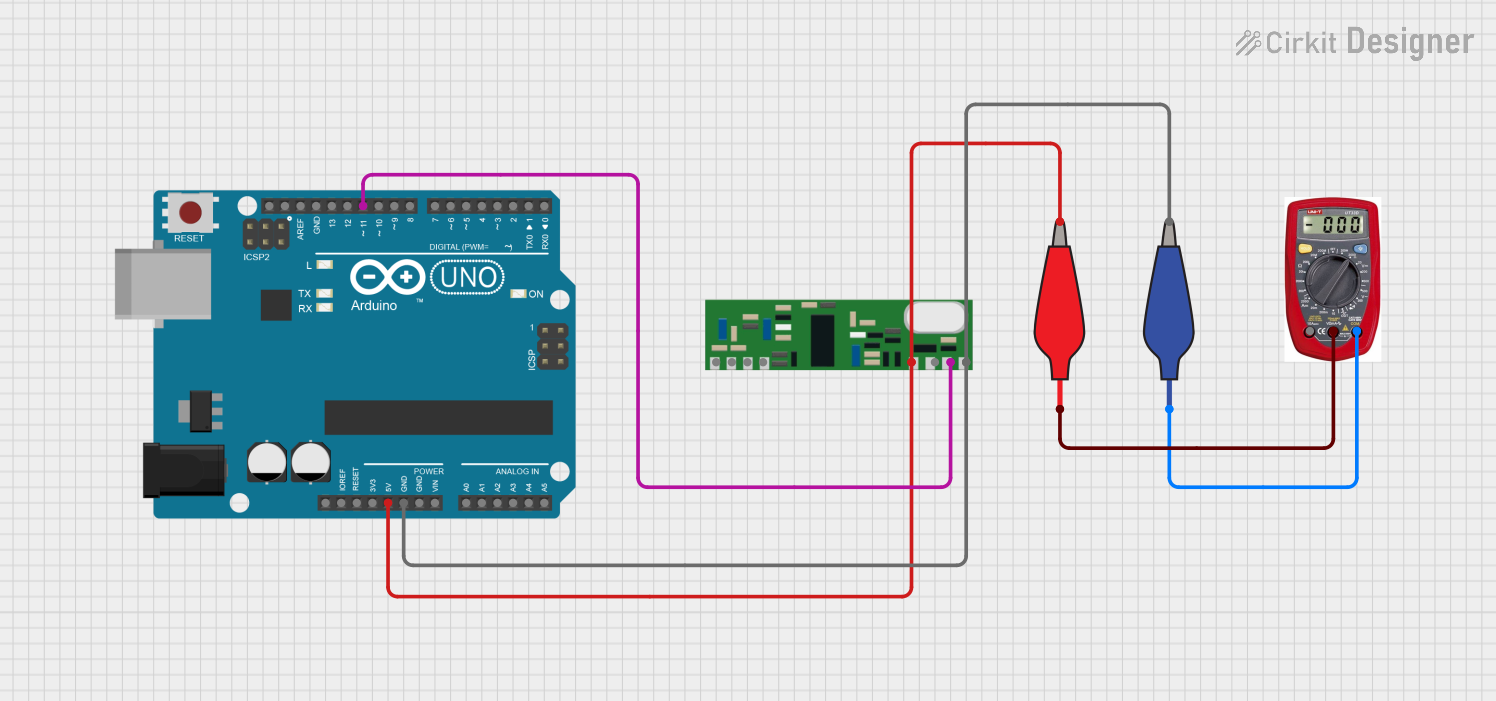
How to Use KXD10036 RF Transmitter: Examples, Pinouts, and Specs

 Design with KXD10036 RF Transmitter in Cirkit Designer
Design with KXD10036 RF Transmitter in Cirkit DesignerIntroduction
The KXD10036 RF Transmitter is a compact electronic device designed to transmit radio frequency signals wirelessly over a short distance. It is commonly used in remote control systems, wireless communication links, and various RF-enabled devices. The transmitter is known for its ease of use and integration into existing electronic projects, making it a popular choice for hobbyists and professionals alike.
Explore Projects Built with KXD10036 RF Transmitter

 Open Project in Cirkit Designer
Open Project in Cirkit Designer
 Open Project in Cirkit Designer
Open Project in Cirkit Designer
 Open Project in Cirkit Designer
Open Project in Cirkit Designer
 Open Project in Cirkit Designer
Open Project in Cirkit DesignerExplore Projects Built with KXD10036 RF Transmitter

 Open Project in Cirkit Designer
Open Project in Cirkit Designer
 Open Project in Cirkit Designer
Open Project in Cirkit Designer
 Open Project in Cirkit Designer
Open Project in Cirkit Designer
 Open Project in Cirkit Designer
Open Project in Cirkit DesignerCommon Applications and Use Cases
- Remote control for consumer electronics (TVs, AC units)
- Wireless doorbells and security systems
- Radio-controlled toys
- Data transmission between embedded systems
- Telemetry and remote sensor data collection
Technical Specifications
Key Technical Details
- Operating Frequency: 433.92 MHz (common ISM band)
- Modulation: Amplitude Shift Keying (ASK)
- Supply Voltage: 3V to 12V DC
- Output Power: Up to 10mW (10dBm) at 12V
- Operating Current: 10mA (typical at 12V)
- Communication Range: Up to 100 meters (line-of-sight, antenna dependent)
Pin Configuration and Descriptions
| Pin Number | Name | Description |
|---|---|---|
| 1 | VCC | Power supply input (3V to 12V DC) |
| 2 | GND | Ground connection |
| 3 | DATA | Data input for modulation |
| 4 | ANT | Antenna connection (typically 17cm for 433MHz) |
Usage Instructions
How to Use the Component in a Circuit
- Connect the VCC pin to a DC power supply within the specified range (3V to 12V).
- Attach the GND pin to the common ground of your circuit.
- Interface the DATA pin with the output of your encoding or control circuit.
- Connect a suitable antenna to the ANT pin for signal transmission.
Important Considerations and Best Practices
- Ensure that the power supply does not exceed the maximum voltage rating to prevent damage.
- Use a quarter-wave monopole or a helical antenna for optimal range.
- Keep the antenna as straight as possible and away from metal objects.
- For better performance, match the antenna impedance with the transmitter.
- Avoid running the transmitter continuously at maximum power to prevent overheating.
- Shield the transmitter from noise sources to minimize interference.
Example Code for Arduino UNO
// Include the RadioHead Amplitude Shift Keying library
#include <RH_ASK.h>
// Create an instance of the ASK object
RH_ASK rf_transmitter;
void setup() {
// Initialize ASK object with default settings
if (!rf_transmitter.init()) {
Serial.println("RF Transmitter init failed");
}
}
void loop() {
const char *msg = "Hello World";
// Send a message wirelessly
rf_transmitter.send((uint8_t *)msg, strlen(msg));
rf_transmitter.waitPacketSent();
// Wait for a second before sending the next message
delay(1000);
}
Troubleshooting and FAQs
Common Issues Users Might Face
- No Signal Transmission: Ensure the antenna is properly connected and the power supply is within the specified range.
- Short Range: Check the antenna length and placement. Also, verify that the power supply voltage is adequate.
- Intermittent Transmission: This could be due to power supply instability or interference from other RF devices.
Solutions and Tips for Troubleshooting
- Double-check wiring and solder joints for any loose connections.
- Use a multimeter to verify the voltage at the VCC pin.
- Test the DATA input with an oscilloscope to ensure that the signal is being modulated correctly.
- If range is an issue, experiment with different antenna designs and orientations.
- Ensure that the transmitter is not placed near metal objects or electronic devices that could cause interference.
FAQs
Q: Can I use the KXD10036 RF Transmitter for long-distance communication? A: The KXD10036 is designed for short-range applications. For longer distances, consider using a more powerful transmitter or implementing a repeater.
Q: Is it legal to use the KXD10036 RF Transmitter? A: Yes, it operates in the 433.92 MHz ISM band, which is typically allowed for low-power devices, but always check local regulations.
Q: Can I connect multiple transmitters to create a network? A: Yes, but you will need to implement a protocol to manage the communication and avoid signal collision.
Q: What kind of data can I transmit with the KXD10036? A: You can transmit any digital data that can be modulated onto the carrier frequency, including binary, ASCII, or encoded sensor data.
Q: How can I increase the transmission range? A: Use a higher voltage within the allowed range, optimize the antenna design, and reduce obstacles between the transmitter and receiver.